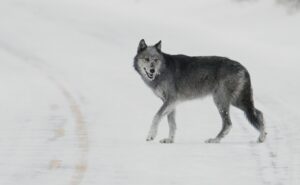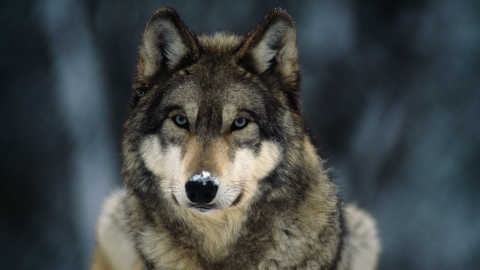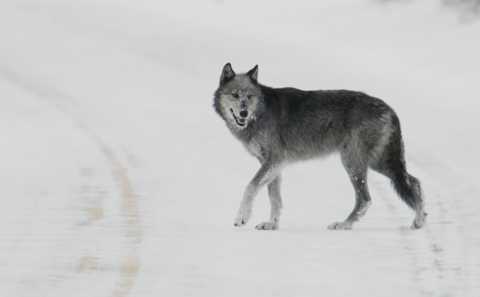Jackson Hole Wildlife, Part 3: Gray Wolves

Welcome to part 3 in a series about Jackson Hole wildlife. If you enjoyed our earlier segments on bald eagles and grizzly bears, now’s your chance to find out about the area’s most enigmatic predator—the wolf. Read part 1 here and part 2 here.
[caption id="attachment_1504" align="aligncenter" width="480"] Winter is coming.[/caption]
Latin name: Canis lupis
Winter is coming.[/caption]
Latin name: Canis lupis
 Not pictured: werewolf.[/caption]
Have you see any wolves around Jackson Hole? Stop by Flat Creek Inn, the closest Jackson Hole lodgings to Grand Teton National Park, and tell us!
Not pictured: werewolf.[/caption]
Have you see any wolves around Jackson Hole? Stop by Flat Creek Inn, the closest Jackson Hole lodgings to Grand Teton National Park, and tell us!
 Winter is coming.[/caption]
Latin name: Canis lupis
Winter is coming.[/caption]
Latin name: Canis lupis
What do they look like?
Despite their name, gray wolves can be black, gray, or nearly white. Adult males average about 100 pounds and can grow up to 6 feet in length. The females are a little smaller.What do they eat?
Large and medium-sized mammals. (This does not include the grandmothers of little red-cloaked girls strolling through the woods.) They digest food quickly, giving them the ability to pack down a large quantity of meat in a short amount of time.Where can I see them around Jackson?
It’s not easy. There are only 380 wolves in all of Wyoming. However, you can occasionally spot them out on the elk refuge. You might see them in the Willow Flats area or in the sagebrush throughout Grand Teton National Park, but you’re more likely to see them if you venture into northern Yellowstone.Are they endangered?
Wolves in Wyoming were removed from the endangered species list in April 2017.How long do they live?
Up to 13 years.How fast can they run?
36 to 38 miles per hour in a sprint. Like Tolkien’s dwarves, they’re very dangerous over short distances.How big is a pack?
All you really need for a pack is a single alpha pair. But packs can also grow to include 30 or more wolves.Can I hunt them?
Yes, but it’s difficult. Last year, 44 wolves were killed by hunters, meeting the state’s quota for wolf management. This is out of 2500 wolf hunting licenses issues, meaning about 1.7 percent of hunters were successful. Another 32 wolves were killed in areas of the state where they’re considered predators and can be killed without a license.If I get bitten by a wolf, do I turn into one?
Nope. Stop asking.What else should I know about them?
In order for a new wolf cub to urinate, its mother has to massage its belly with her warm tongue. Not sure what you should do with this information, but hey, there you go. Humans have about 5 million scent cells. Wolves, on the other hand, have about 200 million. There’s only one other recognized species of wolf—the red wolf. Many scientists debate whether they’re a separate species at all. According to myth, the founders of Rome, Romulus and Remus, were raised by a she-wolf. A further word: This should go without saying, but don’t approach any wolves you see. They don’t usually eat people, but they might make an exception if they’re desperate. Even if they’re not hungry, they typically don’t appreciate trespassers. [caption id="attachment_1505" align="aligncenter" width="480"] Not pictured: werewolf.[/caption]
Have you see any wolves around Jackson Hole? Stop by Flat Creek Inn, the closest Jackson Hole lodgings to Grand Teton National Park, and tell us!
Not pictured: werewolf.[/caption]
Have you see any wolves around Jackson Hole? Stop by Flat Creek Inn, the closest Jackson Hole lodgings to Grand Teton National Park, and tell us! 

Saw a wolf coming out of Jackson Hole!
There are only 380 wolves in all of Wyoming?
ROTFLMAO
There are a hell of a lot more wolves in Wyoming than that. You need to update your information.
I believe I just saw a wolf between Vogel Rd and Coyote Canyon Rd far off at foot of mountain. It could have been a coyote but it be was extremely large . Saw a pack of 7 wolves stalking a bison in upper Yellowstone 4 days ago and this lone creature looked exactly like them.